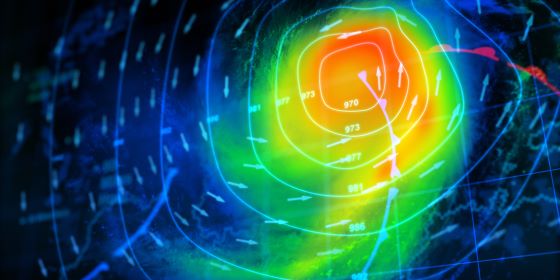
Understanding Weather Patterns: A Comprehensive Guide
Introduction:
Weather is an integral aspect of our daily lives, influencing everything from our clothing choices to our outdoor activities. It is a dynamic and complex system that involves the interaction of various atmospheric elements. In this comprehensive guide, we will delve into the key components of weather, the factors that influence it, and how meteorologists predict and analyze weather patterns.
The Atmosphere:
Weather occurs in the Earth’s atmosphere, a layer of gases surrounding the planet. The primary components of the atmosphere include nitrogen, oxygen, water vapor, and trace gases. These elements interact to create the conditions we experience as weather. Factors Influencing Weather:
Several factors influence weather patterns, and understanding them is crucial for predicting and interpreting atmospheric conditions. Key factors include:
Temperature: The amount of heat in the atmosphere affects air density, pressure, and moisture content.
- Humidity: The amount of water vapor in the air influences cloud formation, precipitation, and the feeling of warmth or coldness.
- Pressure: Changes in air pressure contribute to the development of high and low-pressure systems, which in turn affect wind patterns.
- Wind: The movement of air masses creates wind, influencing temperature distribution and weather patterns.
- Solar Radiation: The Earth’s position relative to the sun and the angle of sunlight affect seasonal variations and climate.
Weather Phenomena:
Understanding various weather phenomena is essential for predicting and preparing for different atmospheric conditions. Some common phenomena include:
Thunderstorms: These intense weather events involve lightning, thunder, heavy rain, and sometimes hail.
Tornadoes: Powerful rotating columns of air, tornadoes can cause significant damage in a short amount of time.
Hurricanes and Cyclones: These large-scale tropical storms are characterized by strong winds and heavy rainfall.
Snowstorms: Cold air masses meeting moist air can result in heavy snowfall and blizzard conditions.
Weather Instruments and Technology:
Meteorologists use a variety of instruments and advanced technology to monitor and predict weather conditions. Instruments such as barometers, thermometers, and anemometers provide real-time data, while satellites and radar systems offer a broader view of atmospheric conditions.
Weather Forecasting:Meteorologists use computer models and simulations based on current and historical weather data to forecast future conditions. These predictions help individuals, businesses, and governments make informed decisions regarding activities, agriculture, and emergency preparedness.
Conclusion:Weather is a complex and dynamic system that plays a significant role in our daily lives. By understanding the key components, factors, and phenomena associated with weather, we can better appreciate and adapt to the ever-changing atmospheric conditions. Whether it’s planning a weekend getaway or preparing for severe weather events, knowledge about weather patterns empowers us to make informed choices in our daily lives.



